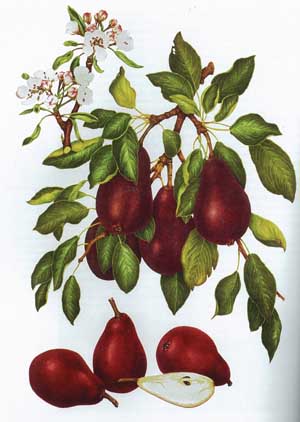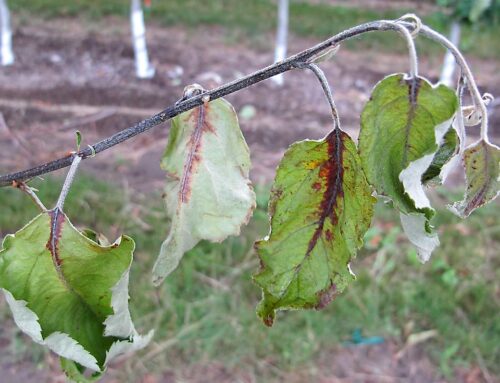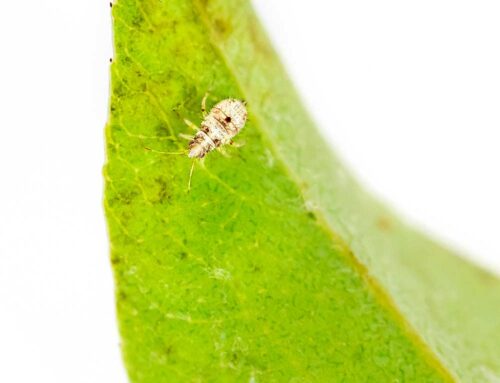
Starkrimson is a strain of Clapp’s Favorite, which was raised by Thaddeus Clapp in Dorcester, Massachussets, in 1860. Starkrimson was discovered in 1939 in South Haven, Michigan, by Adrian Kalle and introduced by Stark Bros. nursery in 1956. Starkrimson was tested in the United Kingdom but didn’t catch on because the fruit color was considered too unusual, according to Joan Morgan’s The Book of Pears. (Courtesy Painting by Elisabeth Dowle)
The Book of Pears is a fine resource for the pear aficionado. Author Dr. Joan Morgan painstakingly traces the history of the pear, starting with wild pear species and proceeding through the ages to the present day.
A dip into the 300-page tome reveals that the first reports of cultivated pears came from ancient Assyria (now Syria) around the 18th century B.C.
In the fifth and fourth centuries B.C., pears were cultivated in Greece, and the Peloponnese peninsula was once called Apia, meaning “pear land,” because pear trees were so numerous there.
Morgan discusses the development of new dessert and perry pear varieties and their cultivation and consumption in Europe through the ages.
The Defra National Fruit Collection at Brogdale in the United Kingdom now has more than 500 varieties of pears, drawn from across the world and spanning many centuries.
The book includes a directory of pear varieties, based primarily on the Brogdale collection, which includes descriptions, tasting notes and historical, geographical and horticultural information.
The book is illustrated with watercolor paintings of 40 pear varieties by Elisabeth Dowle as well as many historical photos and drawings.
Go to www.thebookofpears.fruitforum.net for more information.






Leave A Comment